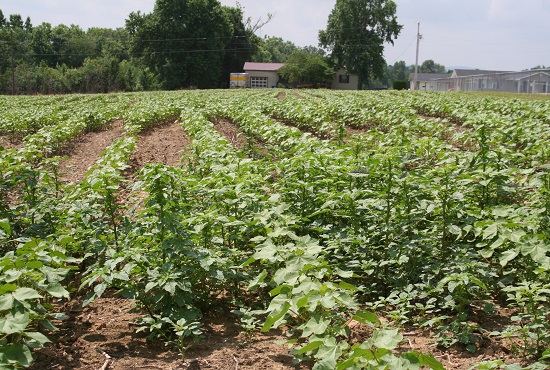Shurley: Trying to Figure Out This Crazy Good Cotton Market
This market is crazy, unpredictable and unknown – but so far, in a good way.
The multitude of factors impacting price are as complex as I’ve experienced in over 30 years dealing with cotton. This includes:
- Expected demand growth (rebound) after stunning weakness.
- Demand growth is expected due to anticipated improvement in the COVID-19 pandemic situation.
- A large decline (even more than expected) in the U.S. crop that was thought to be there all along but recognized late.
- Even with a much smaller U.S. crop, exports are expected to be strong, thus trimming U.S. ending stocks significantly.
- Strong prices in other/competing crops that seem to be benefiting, taking cotton with it.
- The value of the dollar – a weaker dollar makes U.S. exports relatively cheaper. But the dollar is up and down, up and down in the short-term. It’s hard to know where it’s headed longer term.
- The U.S. stock market. Market gains are seen as positive for commodities. Losses are not good. There does seem to be linkages.
- What is the future for trade and agricultural policy under a Biden administration?
Prices
Nearby old crop March futures now stands at about 83 cents. After an over 300 point increase on Feb. 4, prices dropped on Feb. 5. New crop December is now about 81 cents. The big increase was largely unexpected but could be confirmed (or not) by February’s USDA reports.
The most recent export report was good, but mixed. I have read in some news reports that the recent price action might have been more in response to a bullish report released by the International Cotton Advisory Committee, which projects world production will continue to decline and use increase. I’m not entirely sure, but we’ll see, by comparison, what’s in USDA’s new numbers.
Old crop has seen great price improvement and has now even been in the 80 cents neighborhood or higher for the past month. I sense that most producers have by now finished pricing not all, but most, of the 2020 crop, and it’s time to concentrate more thought on the 2021 crop.
Exports
The weekly export report for the week ending January 28 showed shipments at the highest level since the first week in December and the third highest weekly amount of the marketing year thus far. Sales, however, were down 12% from the previous week and the lowest level in a month.
USDA’s January projections increased 2020 crop year U.S. exports from 15 to 15.25 million bales. It is expected that exports will be increased even further in the February projections.
Demand
World demand (Use) for the 2020 crop marketing year is expected to increase 13% from the horrid pandemic-effected level of only 102.6 million bales last year. An expected recovery in Use, validated by good export numbers, is one reason (the main reason) for the improvement in prices we are experiencing.
But to understand the significance of this and consider where we’ve been and the road ahead, we need to look at the monthly numbers. This is shocking.
World Use/demand for the 2018 crop year was 120.16 million bales. USDA’s first projection of Use for the 2019 crop was 125.93 million bales – a 5% increase. This first estimate was in May 2019. After that, however, Use proceeded to decline every month. The latest estimate of Use for the 2019 crop is 102.6 million bales – 19% less than the first estimate and the lowest Use since 2011.
This erosion in demand put downward pressure on prices for both the 2019 crop and the upcoming 2020 crop. Use for the 2020 crop year is currently projected at 115.73 million bales – a 13% growth from last season. Also worth noting, unlike last year’s crop, monthly USDA estimates have been more stable and actually have trended up since September.
No doubt, the strong uptrend of higher prices we have thankfully experienced for the 2020 crop over the past 6-7 months (from 59-60 cents to now over 80 cents) has been due in large part to the expectation of improved demand/Use. Use is the fuel. Now, if 2020 Use estimates begin to erode as 2019 did, look out.
World Stocks
Much has been said and written about the stocks-to-use ratio as also being a factor in better prices. The stocks/use ratio (S/U) is ending stocks (carry-over) divided by annual use. It’s how much is left over at the end of the marketing year as a percent of use/demand for the year. Suppose ending stocks are 80 million bales and annual Use is 110 million bales. That’s 80/110 = .73 = 73%. In other words, the carry-in is equal to 73% or almost nine months of a year’s use.
A sufficient level of carry-in is necessary to keep the supply pipeline going until the new crop is available. Generally, the smaller the number the tighter supply is relative to demand.
We have learned, however, that this also depends on who has the stocks and who doesn’t – and are the stocks available. Looking at the overall World S/U, the ratio has declined for 2020 compared to 2019, but the ratio is still not tight by recent historical standards. World ending stocks are projected to decline for the 2020 crop year, but stocks are still high by recent history.
We need to look behind the World numbers. Stocks in China have declined from 2011-2014 when they were purposefully building stocks. But stocks have actually changed little now for the last four years. What seems to be driving price is the expectation that 2020 and 2021 mill use in China will improve, thus driving stocks down further unless production increases or imports increase.
For the 2020 crop marketing year, China’s ending stocks are currently projected at 36.27 million bales and S/U ratio of 94%. While this S/U might seem high, it is actually not an uncommon situation for China. China has a recent history of holding relatively high stocks and 94% could be considered below average.
U.S. ending stocks for 2020 are currently projected at 4.6 million bales – down considerably from the 2019 crop year. But a S/U ratio of 26% is not terribly low by historical standards. Again, what might be driving price is the anticipation that U.S. exports could increase further, and stocks decline further.
Outlook For the Road Ahead
The National Cotton Council will release the results of their 2021 acres planted estimates during their annual meeting this week. USDA’s first estimate will be out at the end of March.
Previous expectations have been that cotton acres might be down this year due to high and competitive prices for other crops like corn, soybeans and grain sorghum (and peanuts in some areas). But new crop December futures have trekked to 80 cents and currently have gained on other crops.
Where will 2021 take us? If the demand side continues to recover, we could be set up for a good 2021 and a very good year price wise if any supply shocks take place. We are still months away from planting and already staring at 80 cents. How often does that happen?
It’s important to understand and realize that the strength in prices is built largely on optimistic expectations about demand, tightening stocks, and U.S. exports. There is much yet that has to happen and many complex issues unknown and unpredictable. Expectations may or may not be realized. Producers must decide when to take protection, how, and how much.
I currently see a most likely possible price range of 68 to 85 cents on new crop futures.









